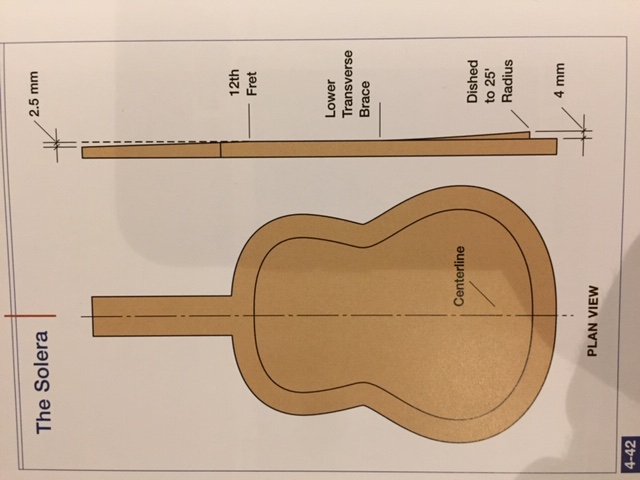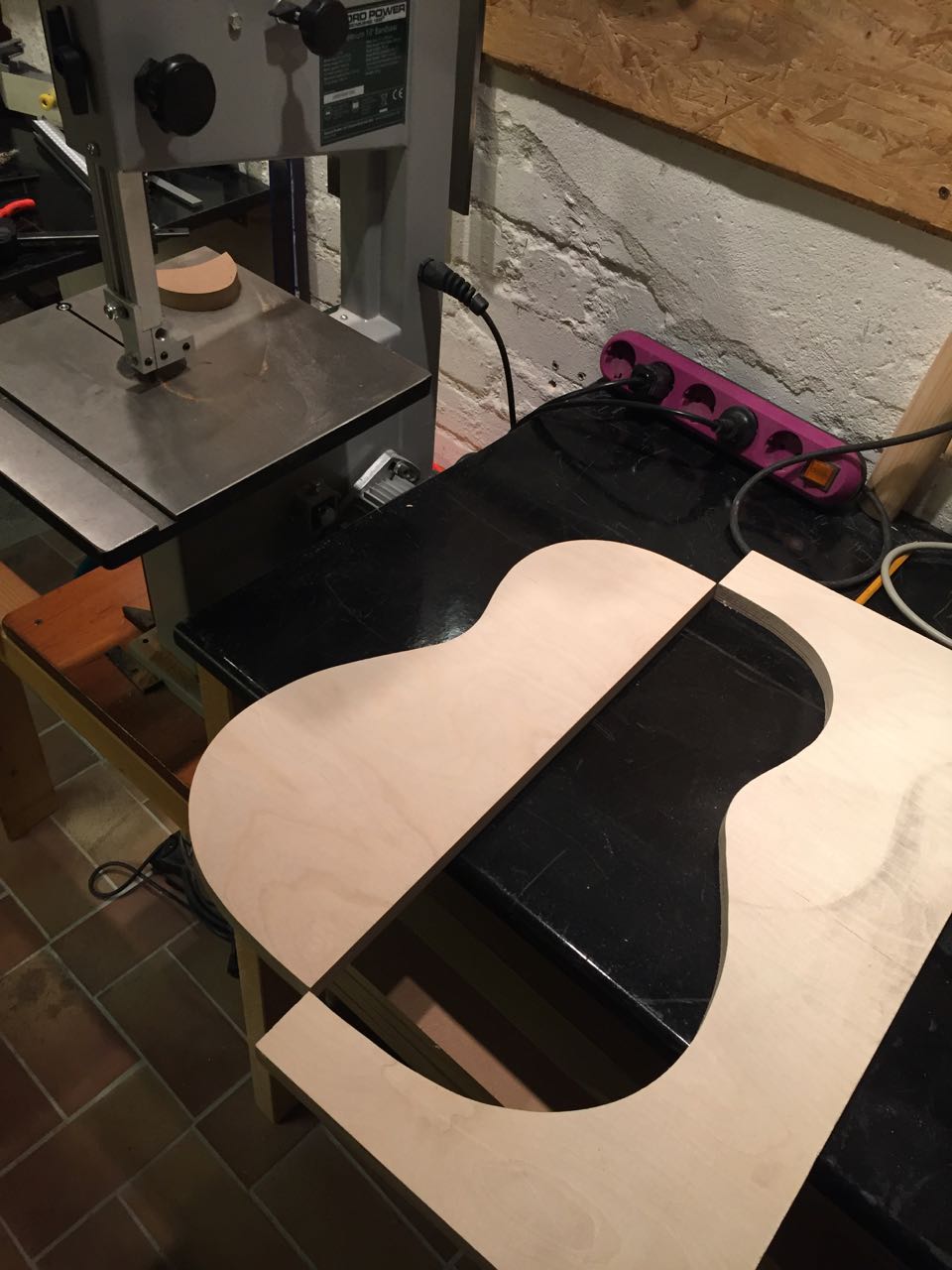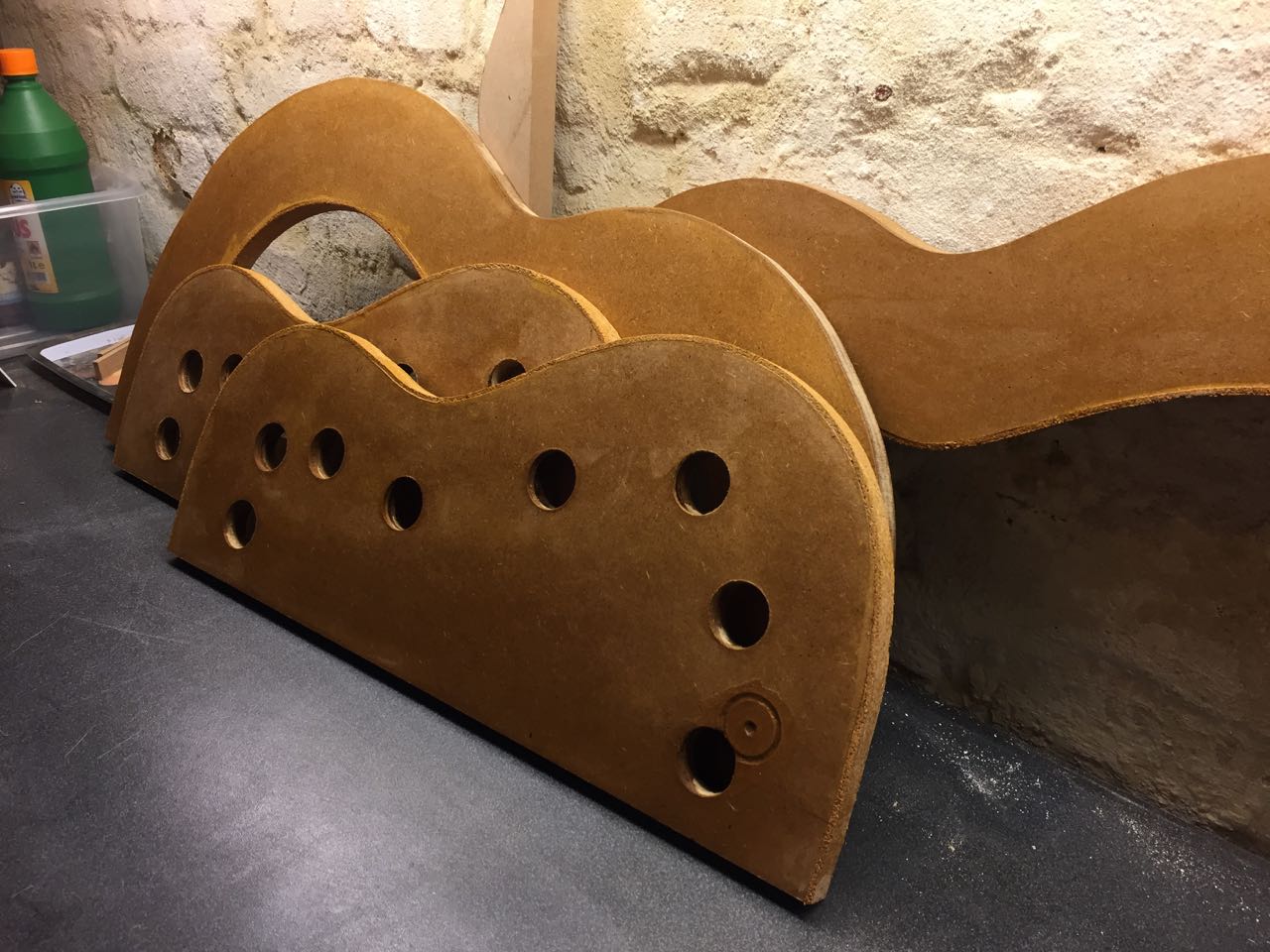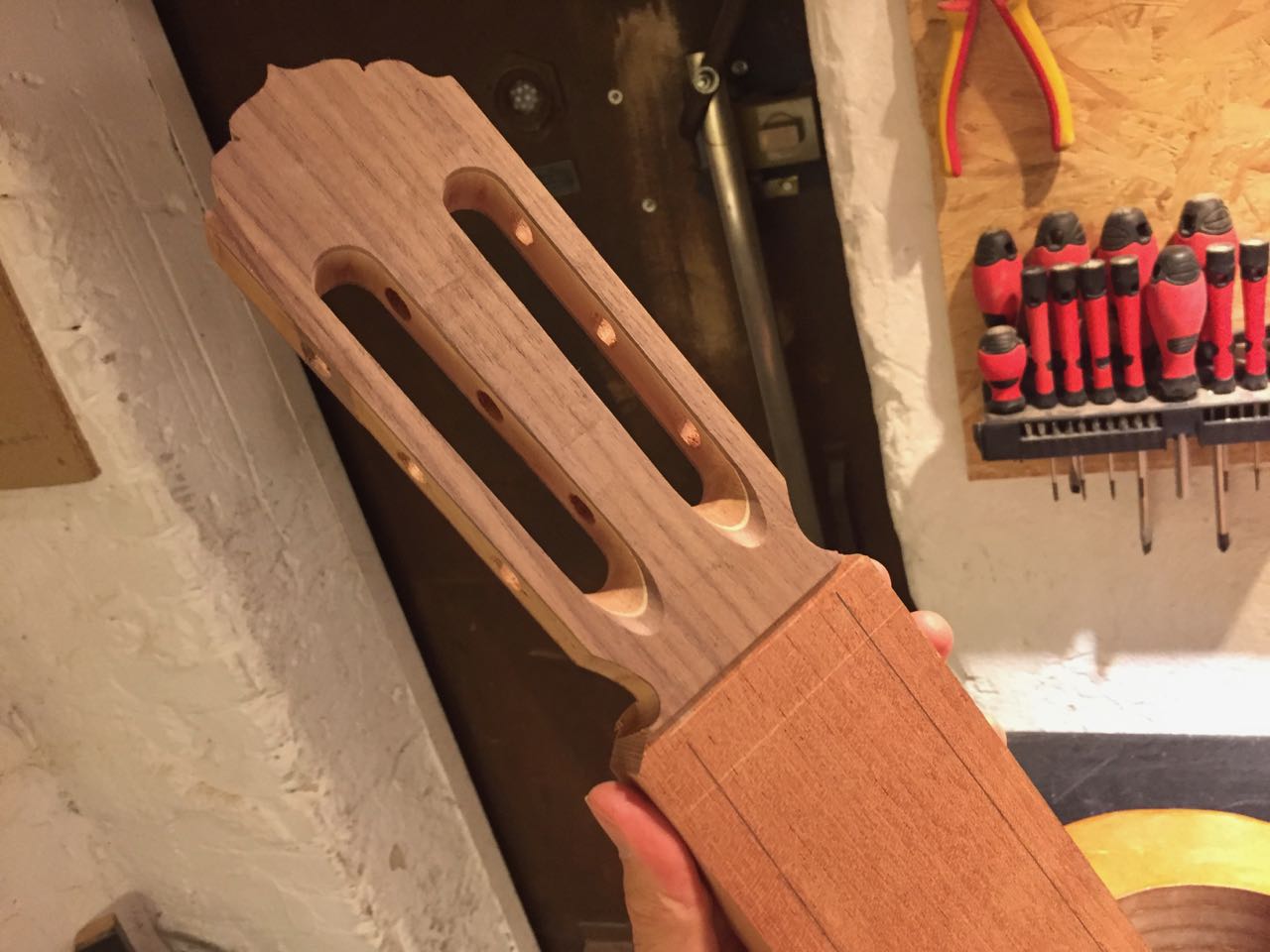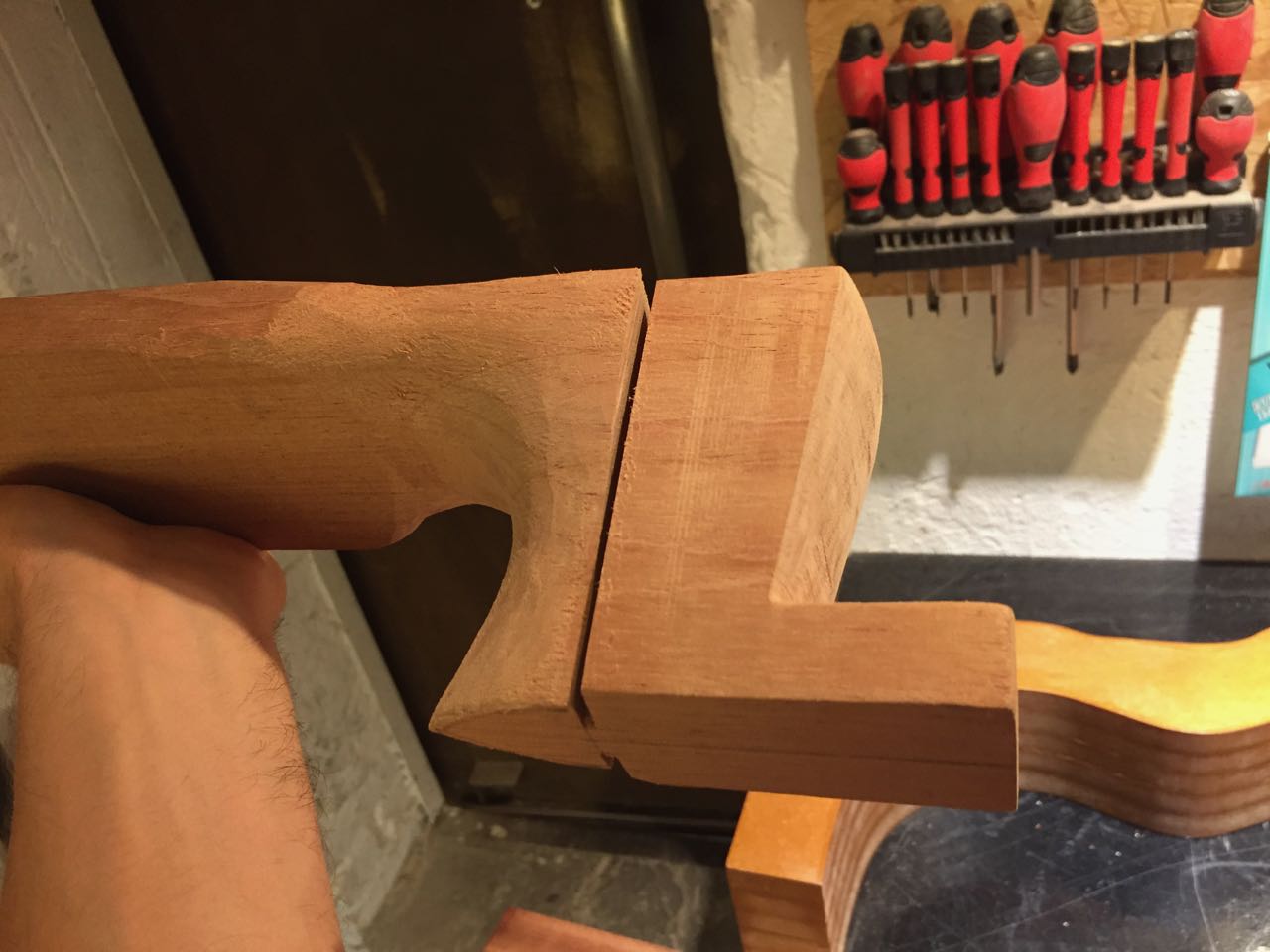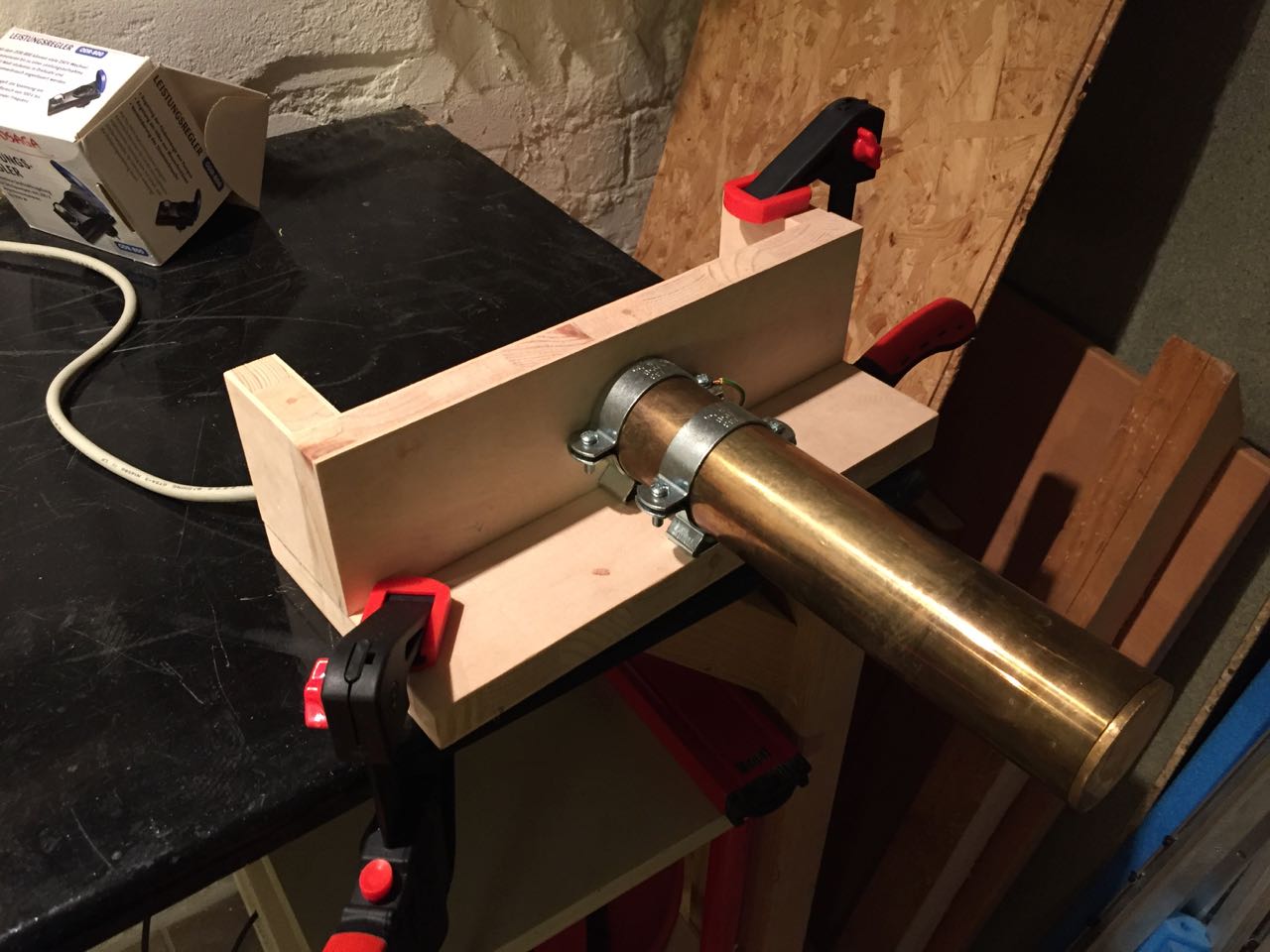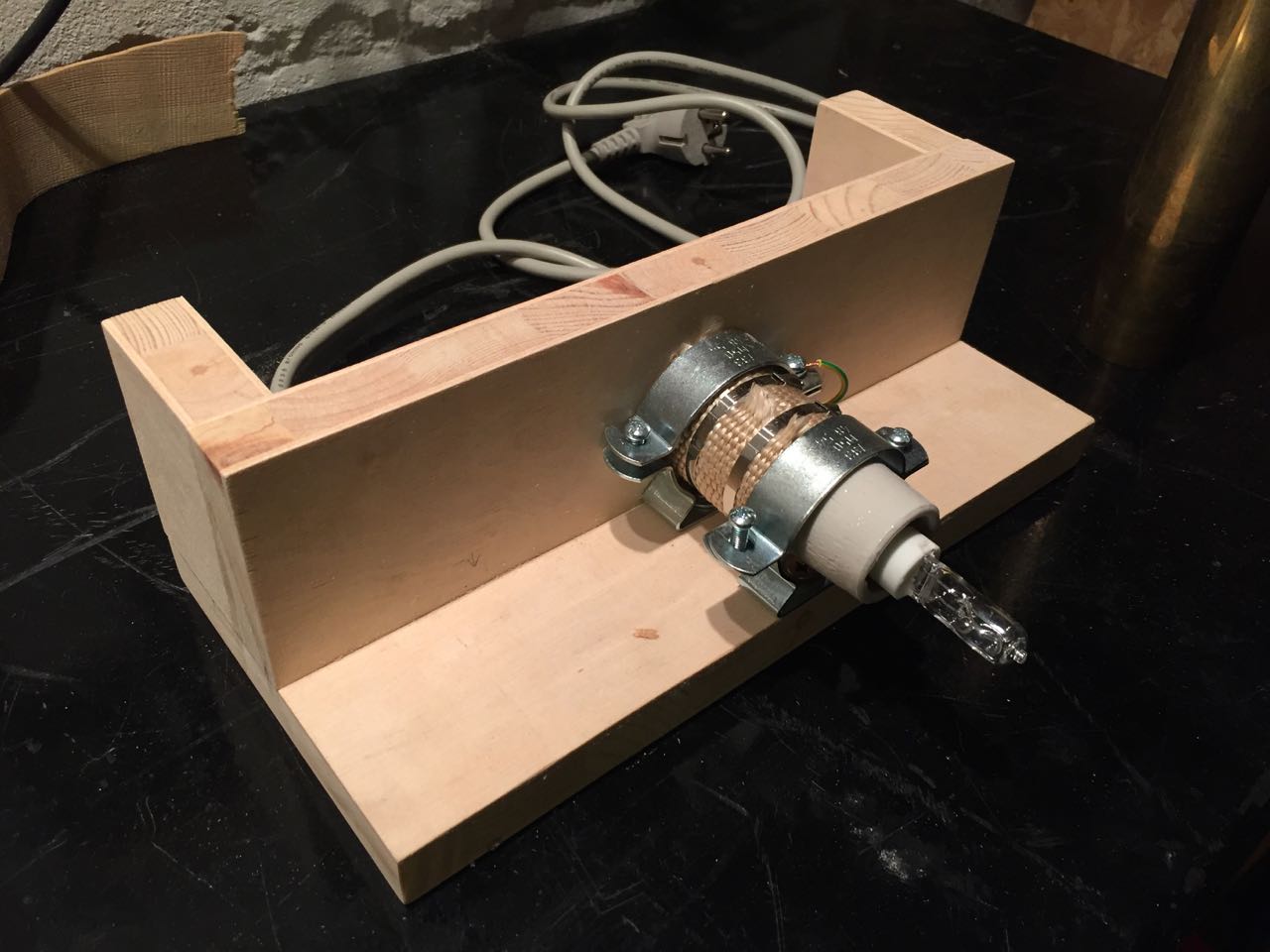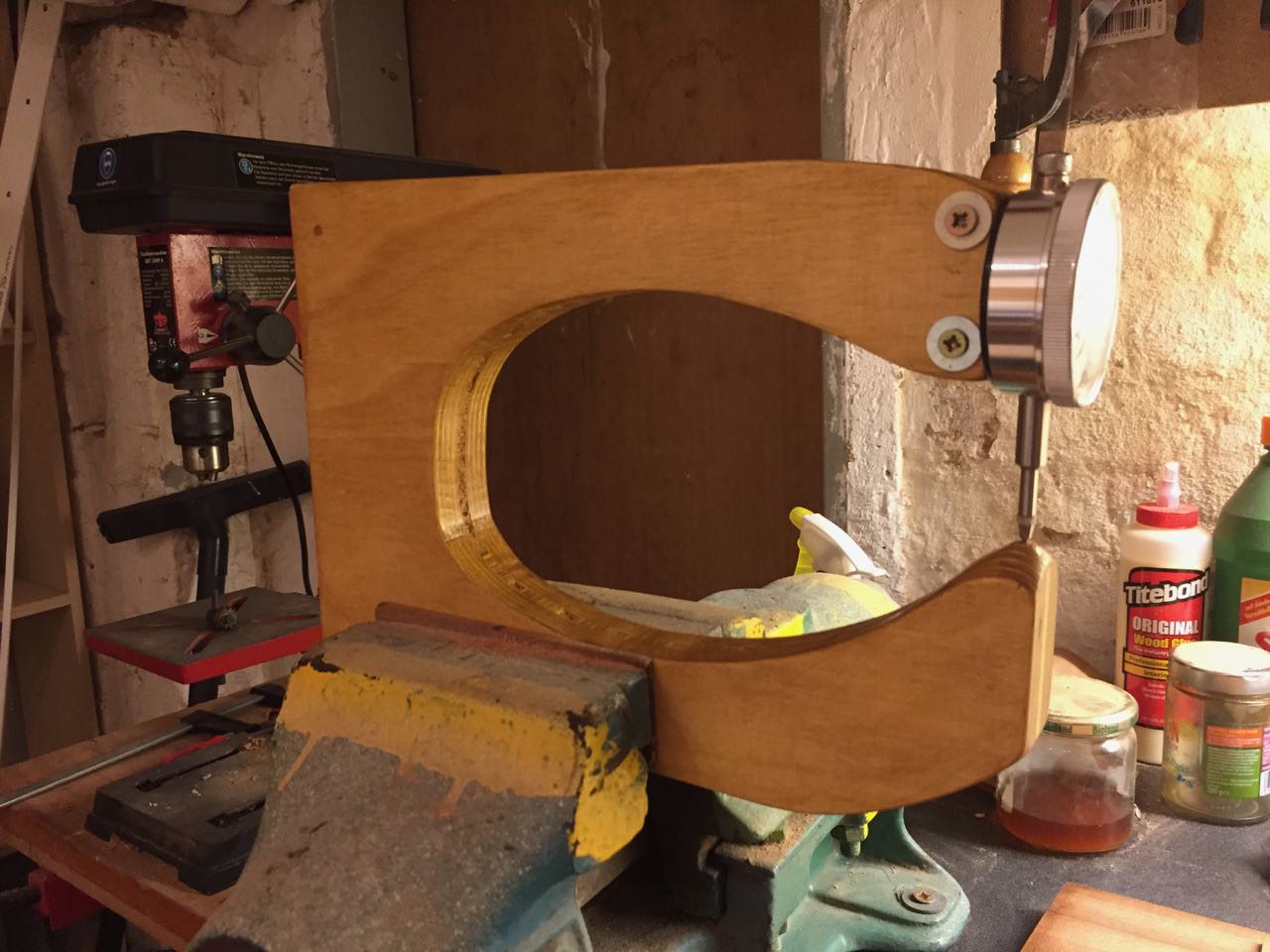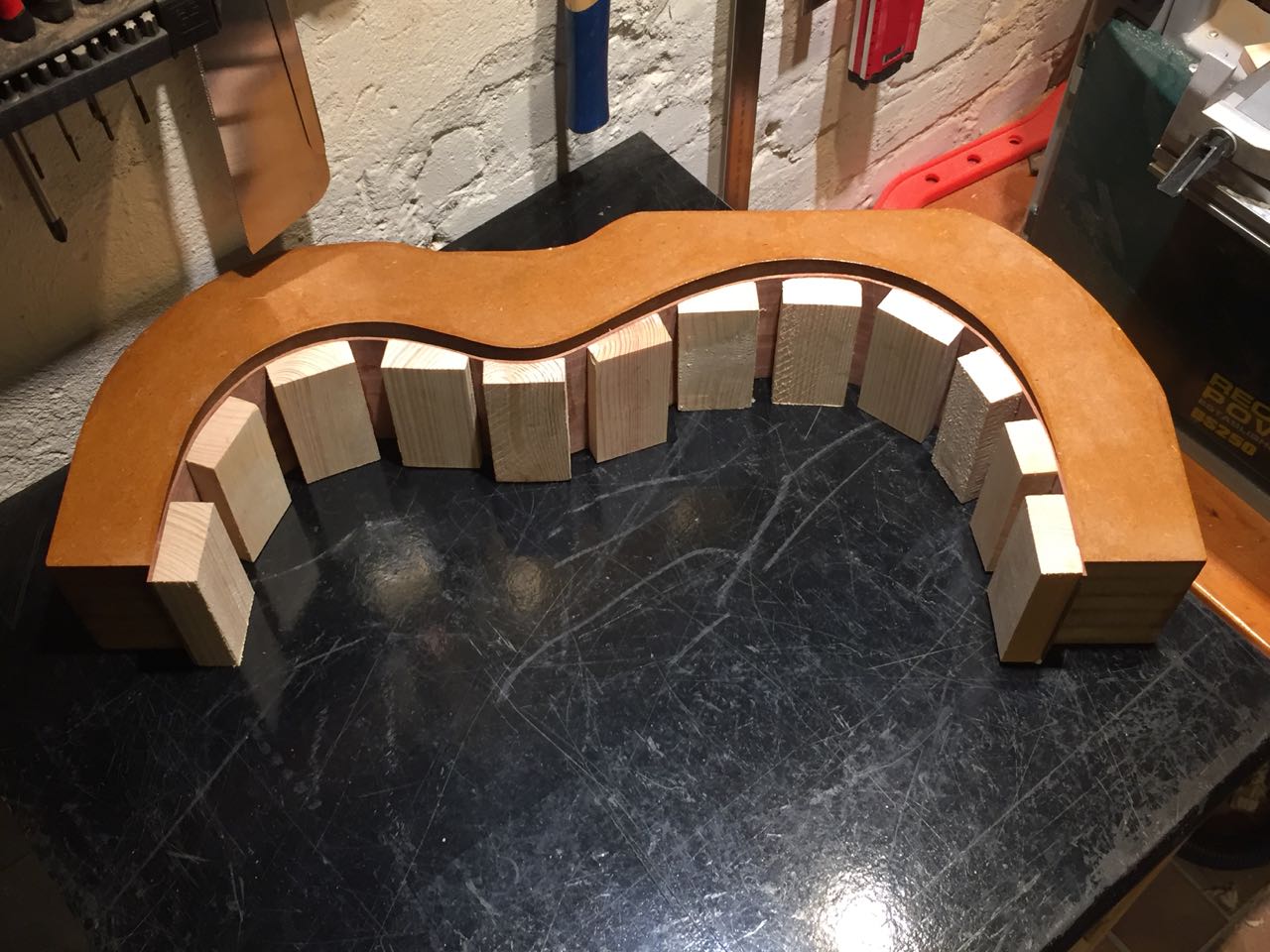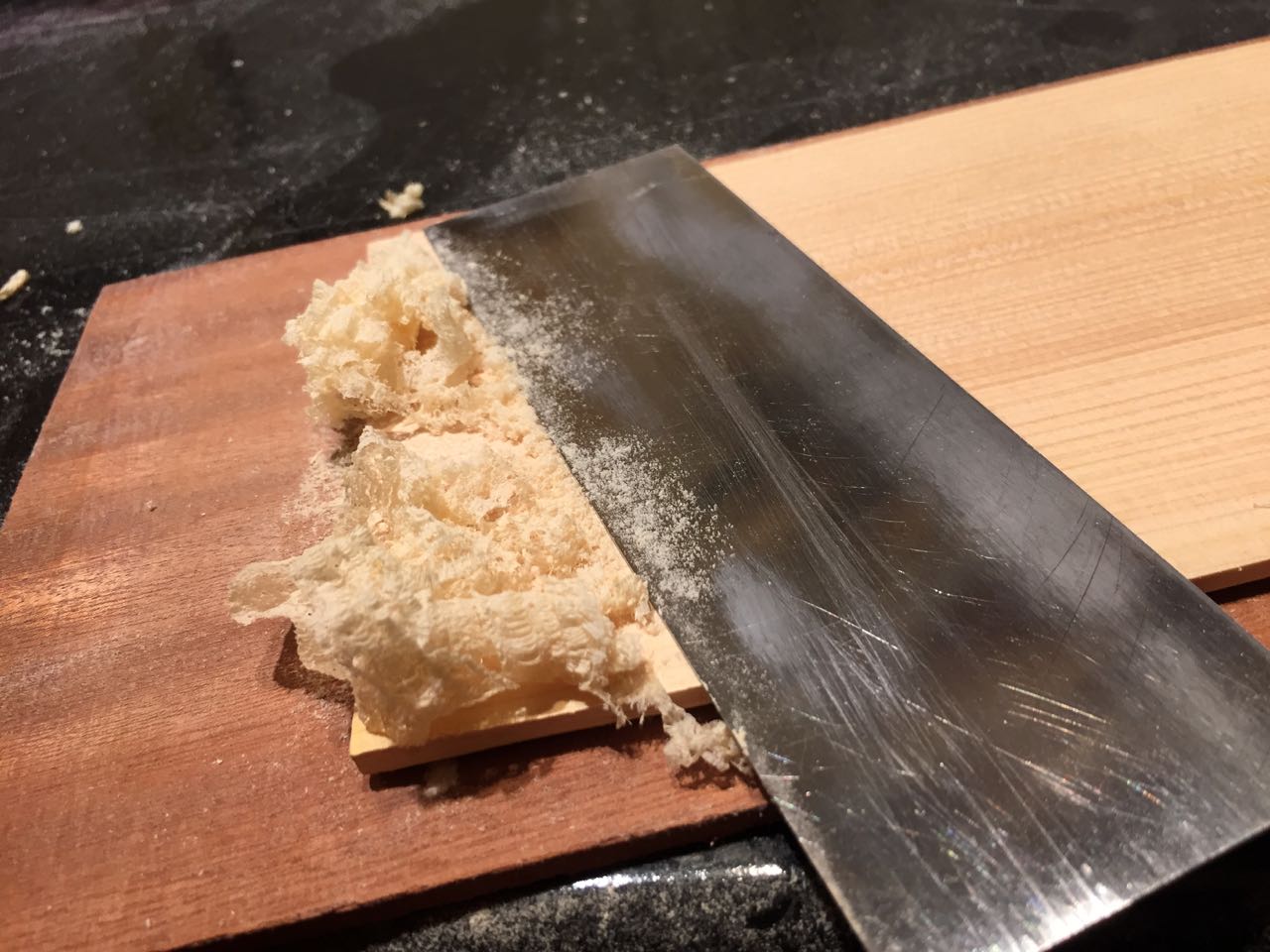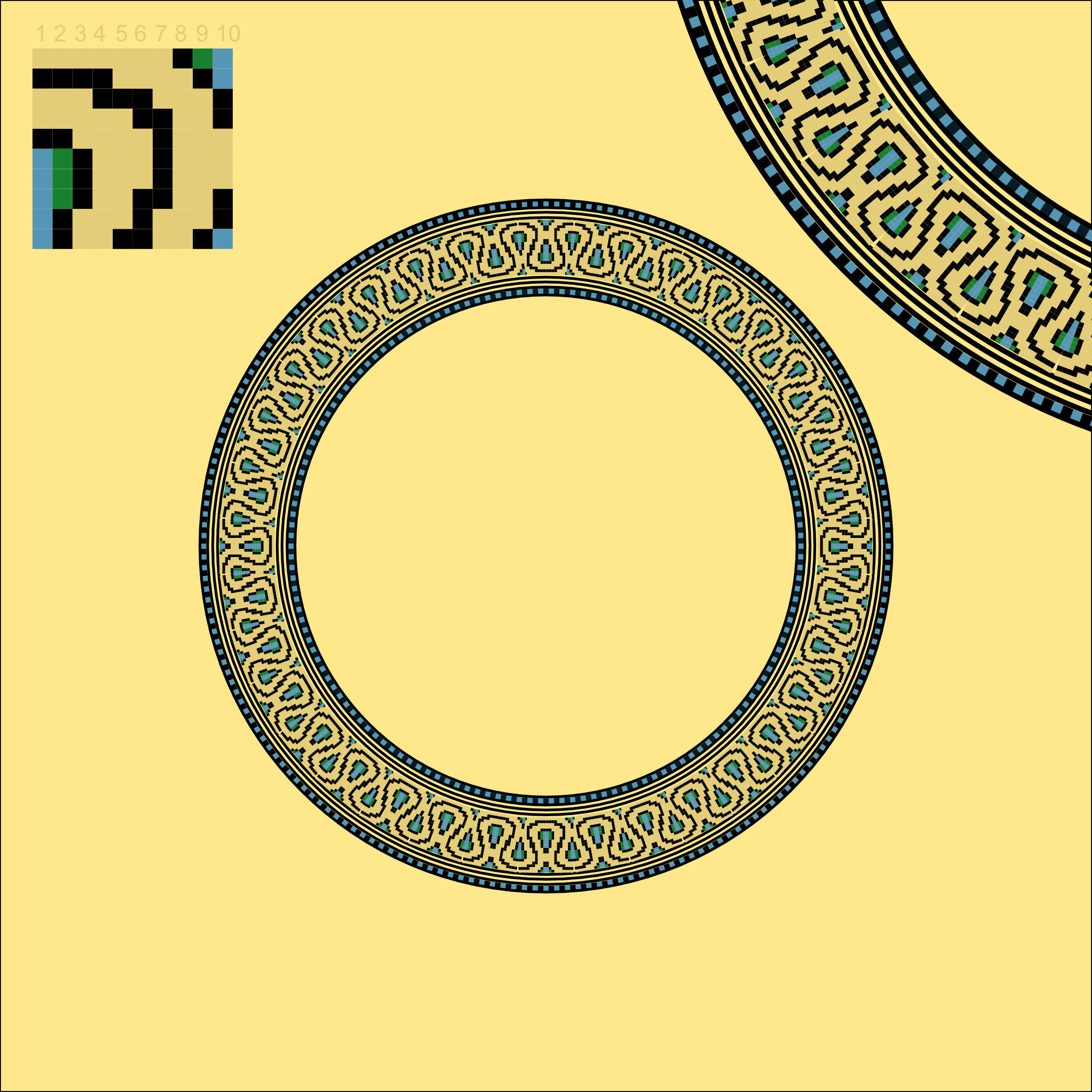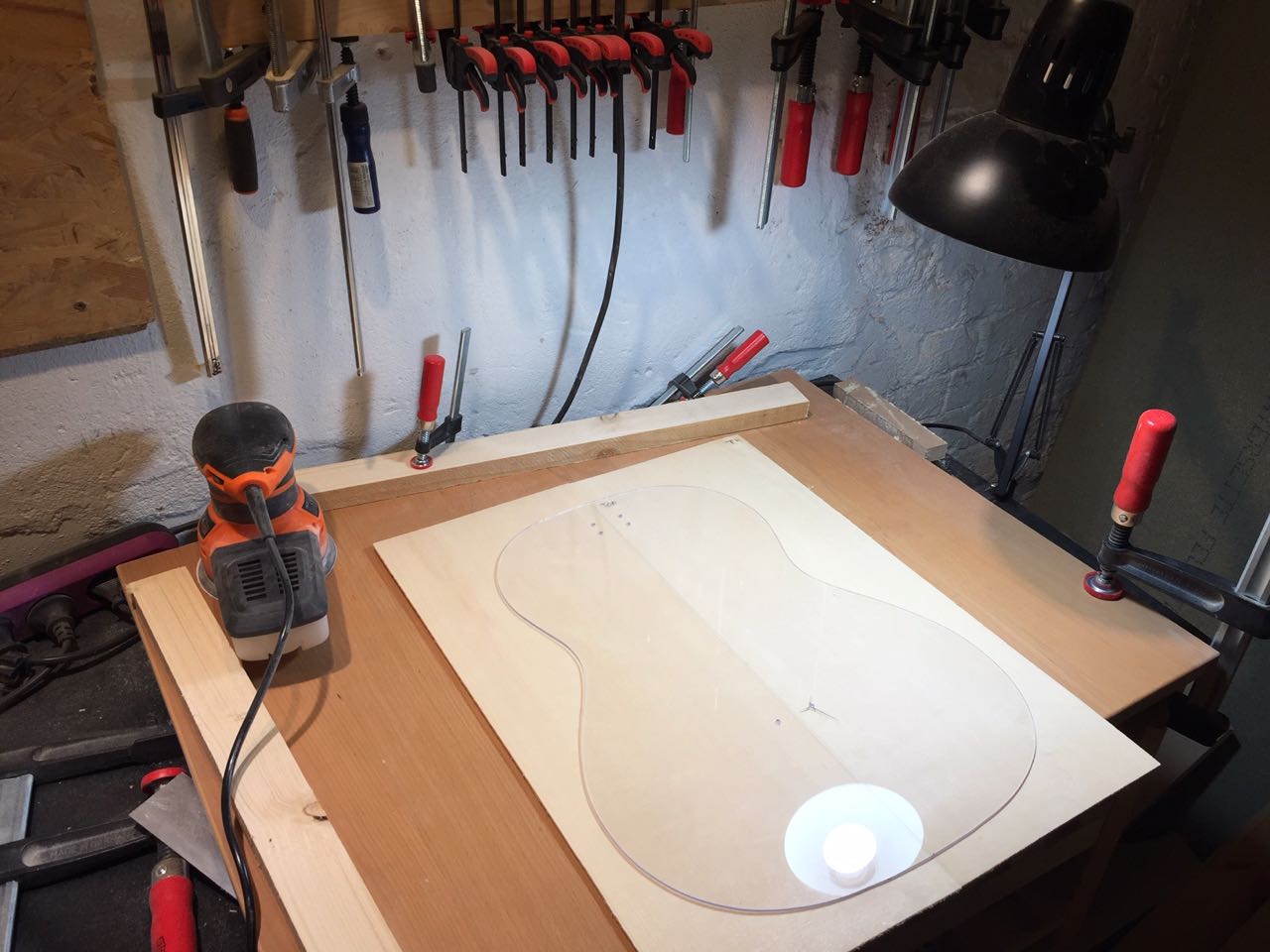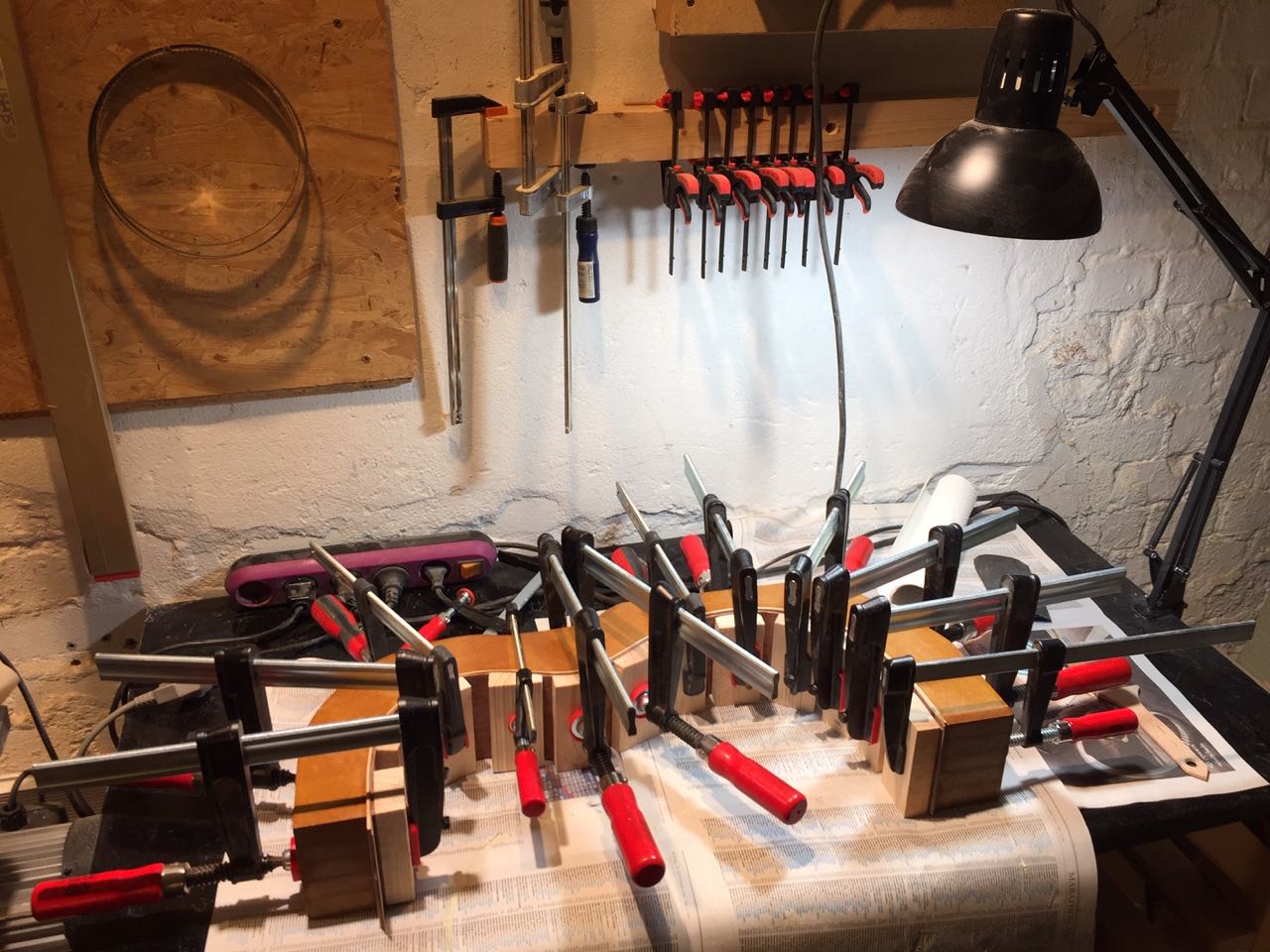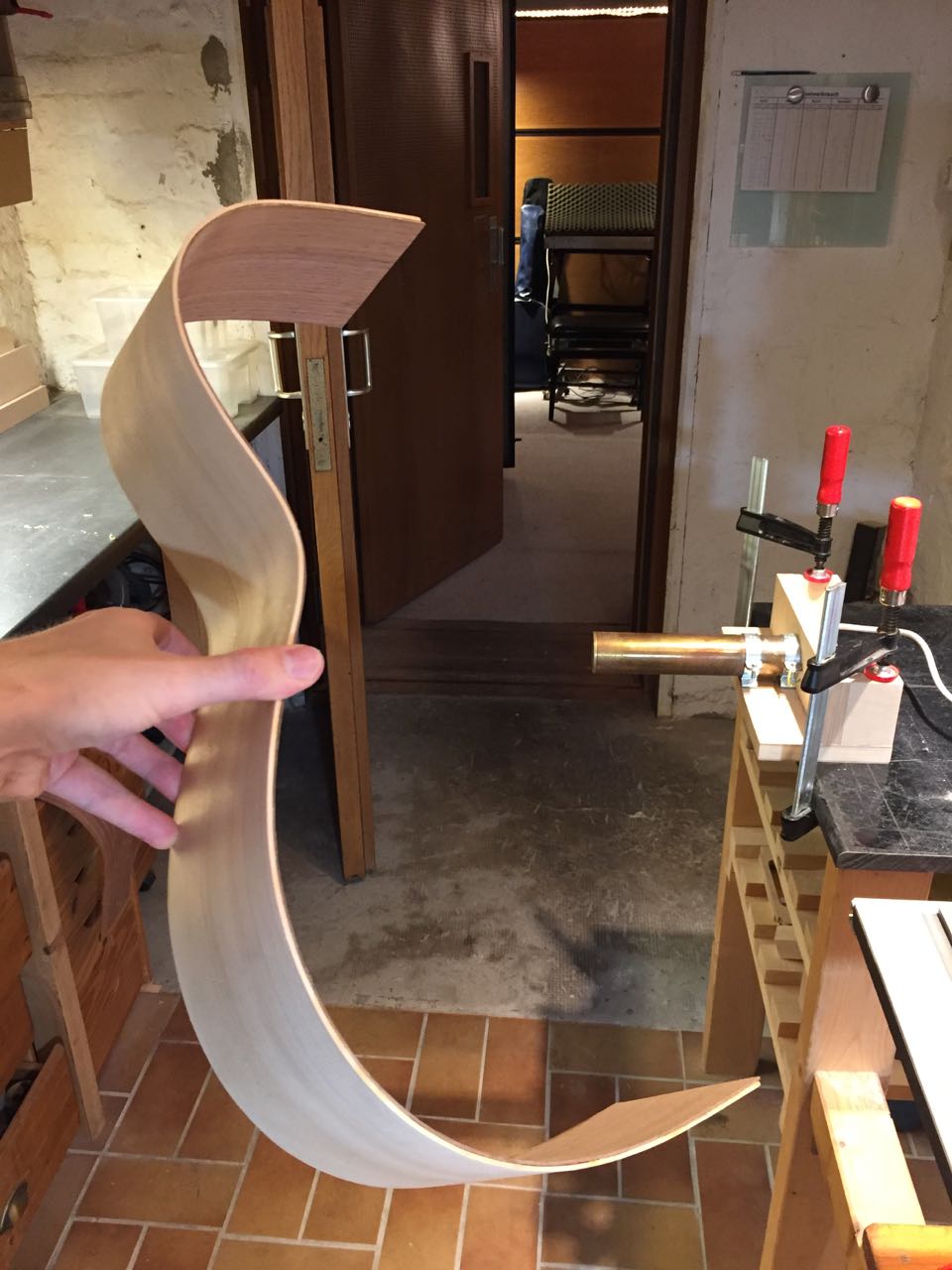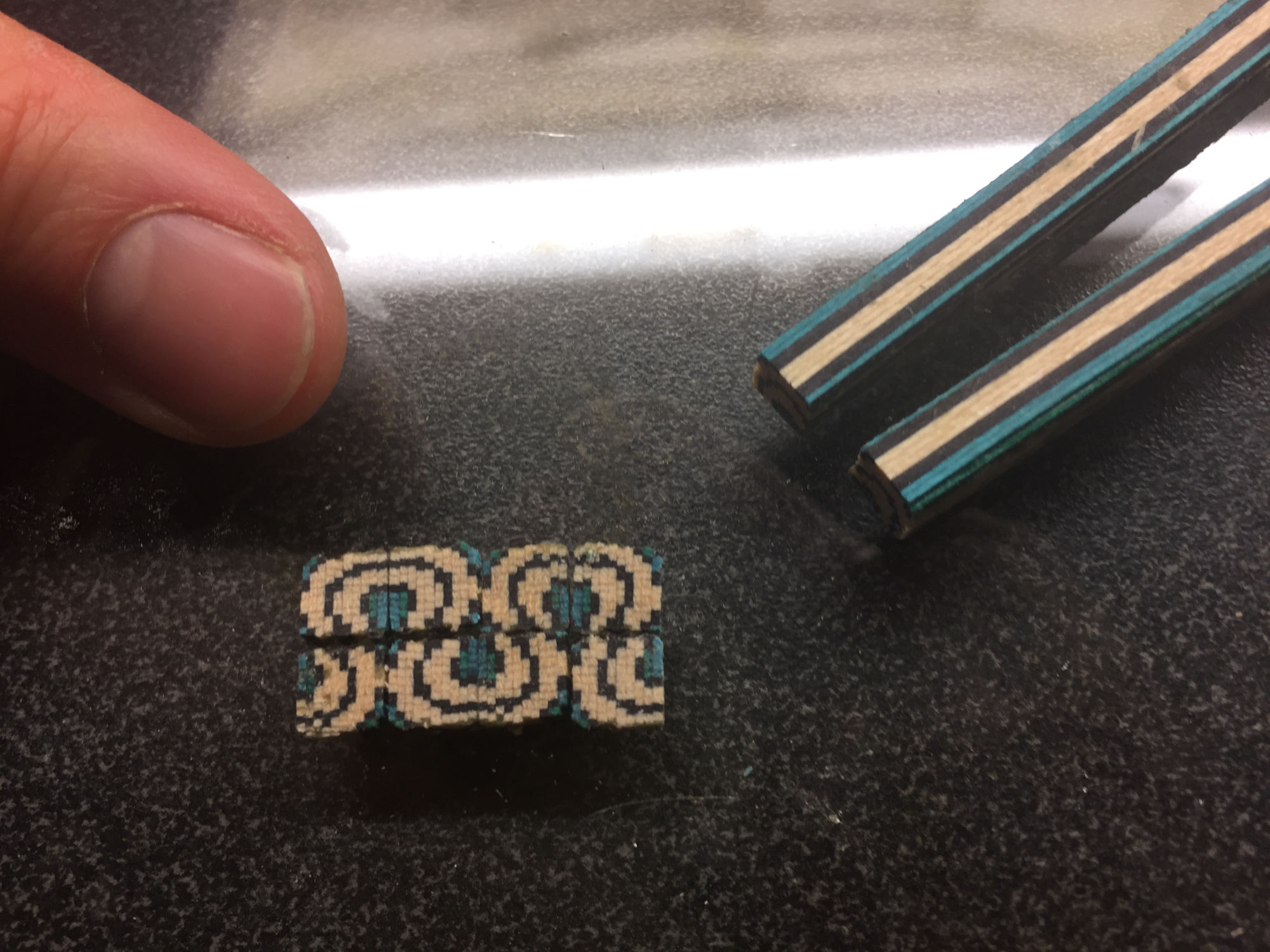|
RobF -> RE: Bogdanovich´s method for flamenco guitars (Nov. 2 2019 1:49:31)
|
Hi Jonas, if you haven’t started over or cut the sticks into tiles yet, you still might be able salvage this. The problem is the circumference of the outer ring is greater than the inner. In other words, you might need 65 tiles to complete the outer ring, but only 63 for the inner.
A possible solution, if you haven’t done any tapering yet, is to remove just a little bit more material when tapering the stick that will be used for the inner ring. You can figure out how much by calculating the outer circumference of each ring, divide the circumference of the outer ring by the raw tile width (~5mm), and then divide the circumference of the inner ring by the result to give you the target width for the outer edge of the inner tiles. You’ll need to make the inner tiles that much smaller enough to end up with the same number of tiles for each ring.
You can avoid the math by drawing out the rings and marking the tapers with lines (like slices of a pie) then just hold the ends of the sticks up to the drawing and eyeball it as you apply the taper.
The result still might not be good enough to make you happy, but it’s worth trying. If you don’t like how it turns out there’s no harm done, experience has been gained, and a simpler pattern beckons.
Also, I have a quick and easy method for gluing up the stick but I need both hands to do it and they get messy with glue. If I can get someone to take pictures for me as I do one I can post a mini tutorial. I don’t need to do any new rosettes at the moment, but maybe I’ll whip a simple one together for a pictorial.
|
|
|
|
